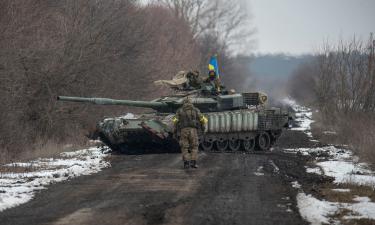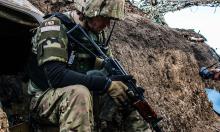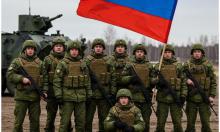Extreme Tourism In Russia
 Russians are testing their nerves more and more often nowadays. Extreme tourism is becoming very popular in the country. The number of magazines and Internet sites dedicated to this activity is constantly growing, and TV programming contains quite a few segments promoting it. Extreme tourists Fyodor Konyukhov, Dmitri and Matvei Shparo have become symbols of Russian fearlessness, and their names are skillfully used as brand names by manufacturers of tourist equipment. In other words, extreme tourism in Russia is transforming from an exotic activity to profitable enterprise.
Russians are testing their nerves more and more often nowadays. Extreme tourism is becoming very popular in the country. The number of magazines and Internet sites dedicated to this activity is constantly growing, and TV programming contains quite a few segments promoting it. Extreme tourists Fyodor Konyukhov, Dmitri and Matvei Shparo have become symbols of Russian fearlessness, and their names are skillfully used as brand names by manufacturers of tourist equipment. In other words, extreme tourism in Russia is transforming from an exotic activity to profitable enterprise.
Recently, diving has become one of the trendiest varieties of extreme tourism in Russia. As many as 15,000 Russians practice diving. They enjoy underwater scenery not only in warm seas - the Black Sea, for example, but also in cold waters of the Arctic Ocean. To practice the Black Sea diving you do not have to be rich. To do the same near the North Pole is quite a pricey affair. You should have at least a thousand dollars to pay for instruction lessons and special equipment. In comparison, salaries in many rural areas of Russia are often no more than a hundred dollars.
Windsurfing has been popular among Russian fans of extreme sports ever since the Soviet era. This kind of adventure will not cost you a whole lot - windsurfing is quite forgiving in terms of expenses. All you do is rent a surfboard, and glide along the Black Sea for about US $20.
The traditional water tourism - canoe, catamaran and rafting trips is popular among young people and older generation of Russians alike. Many big institutions of higher education have their own water tourism clubs. This kind of tourism is often attributed to "intelligentsia" because it is widely practiced by scientists, engineers and medical doctors. Such "water romanticism" is quite affordable even for these representatives of low-paid professions - a two-week trip of this kind costs US $200 at the most. Russians often enjoy rafting trips down rivers in Siberia, the Urals and the Far East. More and more tourist bases pop up all around the country. They normally have all necessary tourist equipment.
Mountaineer and speleological clubs have also been wide spread in Russia since the Soviet times. Fans of mountain climbing have many places to go - from North Caucasus to Kamchatka. Russian mountaineers even have their own popular "Bible" - songs of famous Soviet bard Vladimir Vysotski, who poetized the romantics of mountain climbing.
As to caves, they are easy to find, even quite close to Moscow. Take, for example, the well-known Syany on the Pakhra River. The caves there are used for "training" purposes. Experienced speleologists, though, prefer the caves in the Crimea (Ukraine); there are thousands of them there. Special speleogical tours for children older than 7 years are organized in the area.
Mountain skiers and snowboardists also have many opportunities to practice their favorite activities in Russia. Recently, Krasnaya Polyana in Krasnodar region in the south of Russia has become one of the most fashionable resorts. Frequent visits of Russian President Putin, who enjoys mountain skiing, added to the popularity of the resort. According to president of the Russian Union of Tourism Industry (RUT) Sergei Shpilko, "resorts in the Karachai-Circassian republic and the Kabardin-Balkar republic in the south of Russia are growing intensively." In recent years, rich Russians have switched their preferences from ski resorts in the Alps and the Pyrenees to domestic resorts.Qualityofservices there quite adequately meets European standards. Full equipment set - skis, poles, a suit, a helmet, a ski mask, and gloves - costs up to US $800.
Military-style recreation is one of the most exotic types of extreme tourism offered by Russian tour agencies. It includes military-historical and military technical programs and is intended for those who would want to drive a tank, or fly a combat aircraft, or shoot live rounds. So far, this type of extreme activities is still being tested on tourist market.
Quite a few aviation clubs in Moscow offer an opportunity to make a parachute jump for less than US $50. Instructors point out that during the last decade more and more young women and older people have been joining the ranks of skydiving fans. Many young women are also eager to practice hang-gliding. Favorable conditions are all out there: you can practice hang-gliding even in Moscow. "Presently, there is a new trend among rich Russians and foreigners to make air trips to Northern Pole," says Sergei Shpilko.
Walking trips and horseback riding are becoming popular among young people, especially representatives of the middle class. Usually, walking tours are made through wildlife reserves where animals are not afraid of people because their encounters are rare. Such expeditions involve the use of satellite communications. Travelers normally prefer Altai region or foothills in the Caucasus. A week-and-a-half-long walking trip costs US $250, at the most. A two-week horseback riding trip costs around US $350.
"Some regions in Siberia offer quality entertainment during winter months. Tourists can ride on snowmobiles, on deer- and dog-driven carriages, or in sleighs," continues Sergei Shpilko.
Extreme tourism involving wildlife hunting and fishing costs much less in Russia than in other countries. "Compared to South America, South East Asia and Africa, Russia has several advantages - travel here is less dangerous and the tourism infrastructure is growing really fast," comments the RUT president. "In many regions new airports are being built. Almost every constituent member of the Russian Federation, from the city of Sochi on the Black Sea to Sakhalin Island in the Far East, has three-four star hotels." Therefore, Mr. Shpilko goes on, tourism opportunities in Russia "are gradually becoming quite popular on the tourist market" - well-to-do Europeans and Russians alike go fishing and hunting to Siberia and to Russian North more and more often. They travel to Murmansk on the Barents Sea coast to fish salmon, to Siberia to hunt for wild boars, elks and wolfs. In some Siberian republics, for example, Tuva or Khakassia, tourists can stay in special "yurta" (nomad's tent) camps. Such trips are quite expensive for Russian standards - only a helicopter trip to remote nature reserve areas costs about a thousand dollars.
Mr. Shpilko believes that Russia is a paradise for fans of extreme tourism. "Only a few 'blank spots' that attract tourists so much remained in the world. Many countries simply cannot satisfy tourists' desire for adventure and discovery, anymore. A lot of Western and Eastern tourists have traveled around the entire world and they are searching for new opportunities to discover exotic places and exciting tourist activities. Russia with its vast territory and geographic diversity can offer such opportunities. There are plenty of 'blank spots' here," concludes the RUT president.
Olga Sobolevskaya, RIAN
Subscribe to Pravda.Ru Telegram channel, Facebook, RSS!




